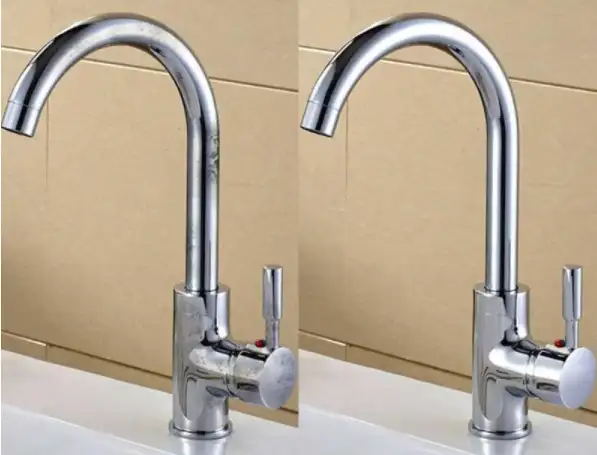Galvanic corrosion is a common issue that arises when stainless steel and aluminum come into contact, especially in the presence of an electrolyte like water or humidity.
This problem is particularly relevant in DIY home projects where these materials are often combined.
In this guide, we’ll explore practical methods to prevent corrosion between stainless steel and aluminum, ensuring the longevity of your projects.
Understanding Galvanic Corrosion
Galvanic corrosion occurs when two dissimilar metals, such as stainless steel and aluminum, are electrically connected in the presence of an electrolyte. Here’s how it works:
- Stainless Steel acts as the cathode (less reactive).
- Aluminum acts as the anode (more reactive) and corrodes faster.
- The presence of an electrolyte, like moisture, accelerates the process.
This phenomenon is a concern because it can weaken aluminum components and compromise the integrity of your project.
Why Corrosion Happens Between Stainless Steel and Aluminum
The difference in their galvanic potential makes stainless steel and aluminum incompatible when exposed to conductive environments. Without proper precautions, aluminum will corrode, while stainless steel remains unaffected.
Common Situations:
- Outdoor furniture: Bolts and frames made of different metals.
- Kitchen appliances: Mixed materials in fixtures or gadgets.
- DIY installations: Using stainless screws with aluminum parts.
Practical Ways to Prevent Corrosion
1. Use a Protective Barrier
Creating a physical or chemical barrier between the two metals prevents direct contact and inhibits the electrochemical reaction.
- Gaskets or Washers: Use non-metallic materials like rubber or plastic as separators.
- Coatings and Paints: Apply protective coatings on aluminum or both metals to block electrical conductivity.
Product Recommendation:
Look for corrosion-resistant sprays or epoxy coatings on Aliexpress to protect your materials effectively.

2. Select Compatible Materials
Whenever possible, choose metals with similar galvanic potential. While this may limit material options, it’s the easiest way to reduce corrosion risks.
- Check the Galvanic Series Chart to ensure compatibility.
- Use pre-treated metals that are designed for joint applications.
Explore pre-anodized aluminum sheets for safer pairing with stainless steel.
3. Add a Sacrificial Anode
Introduce a third metal that is more reactive than aluminum to serve as the “sacrificial anode.” This metal corrodes instead, protecting aluminum and stainless steel.
- Common sacrificial materials include zinc or magnesium.
- This method is often used in marine or outdoor applications.
4. Insulate with Non-Conductive Materials
Breaking the electrical pathway prevents galvanic corrosion.
- Use nylon washers, rubber spacers, or plastic clamps between connections.
- Ensure the insulating material is durable and fits tightly.
DIY Kit Suggestion:
Find anti-corrosion insulation on Aliexpress for quick installations.
5. Reduce Environmental Exposure
Controlling the environment around the metals can drastically slow corrosion.
- Avoid exposure to saltwater or high-humidity areas.
- Use corrosion inhibitors in areas prone to moisture.
Recommended Product:
Consider using anti-corrosion sprays that are specifically designed for humid environments.
6. Regular Maintenance
Inspect joints and contact points regularly for signs of corrosion. Clean and reapply protective barriers as needed.
- Remove rust or corrosion build-up with aluminum-friendly cleaners.
- Re-tighten loose components to avoid creating crevices.
Key Takeaways
- Understand the problem: Galvanic corrosion happens when stainless steel and aluminum contact each other in the presence of an electrolyte.
- Prevent direct contact: Use gaskets, coatings, or insulating materials.
- Choose wisely: Use metals with similar properties or add sacrificial anodes.
- Control the environment: Keep the materials dry and clean for optimal performance.
By following these steps, you can confidently combine stainless steel and aluminum in your DIY projects while minimizing the risk of corrosion.
Products to Enhance Your DIY Projects Anti-Corrosion Spray: Protect surfaces from moisture damage
| Feature | Details |
|---|---|
| Item Type | Rust Converter, Rust Remover & Rust Prevention |
| Package Included | 1 * Rust Remover |
| Function | Rust removal, lubrication, moisturizing |
| Capacity | 30ml |
| Key Features | – Instant Rust Removal: Spray to dissolve rust on jammed machine parts without dismantling. |
| – Deep Penetration: Reaches into gaps to eliminate moisture and corrosion. | |
| – Anti-Rust Coating: Leaves a durable, waxy layer to protect metal surfaces from oxidation. | |
| – Safe Application: Non-toxic, non-conductive, and chemical-free. Safe for metals, plastics, vinyl, and electronics. | |
| – No Protective Gear Needed: Easy-to-use formula without requiring gloves or masks. | |
| Scope of Application | Door and window lubrication, wheel hub lubrication, car rust parts, and general rust removal. |
| Usage Instructions | 1. Shake well before use. |
| 2. Spray evenly on the affected surface. | |
| 3. For rusted areas, sand with sandpaper before spraying. | |
| 4. Use the centralized nozzle for precise application or the spray nozzle for larger areas. |
This rust remover is a versatile solution for restoring metal surfaces and preventing future corrosion. It’s ideal for household maintenance, car care, and DIY projects. Perfect for anyone looking for an easy and effective way to handle rust problems!
Shop these products on Aliexpress today for corrosion-free results!
With these tips, you’ll ensure your projects not only look great but also stand the test of time! Keep your home and appliances in top shape with proper corrosion prevention strategies.
